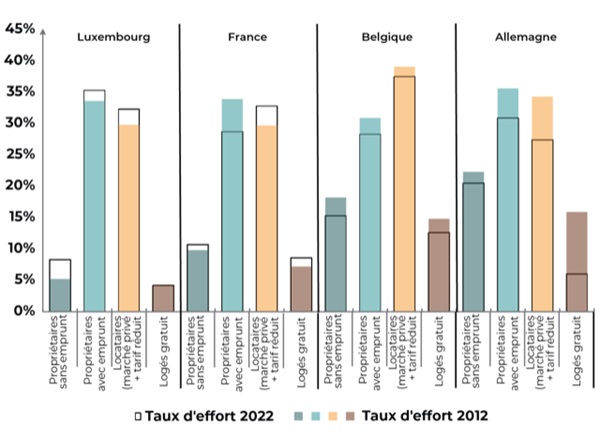
Luxembourg's Ministry of Housing and Spatial Planning has announced that the Housing Observatory (Observatoire de l'habitat) has published a report comparing the cost of housing in Luxembourg with that of its European neighbours: France, Belgium and Germany.
This report addresses the European housing crisis, and highlights the disparities between these countries in terms of policies, accessibility and pressure on households. The report first addressed the differences in the housing policies adopted by these four countries since the end of the 19th century. The different approaches partly explain the variations in the evolution of prices and household effort rates. For example, Luxembourg and Belgium have historically adopted policies focused on supporting access to private property. As a result, the affordable housing deficit persists in Luxembourg and Belgium, particularly for low-income households.
In France, housing policies have evolved towards supporting personal assistance and the production of intermediate housing, to the detriment of low-rent social housing that marked its post-war policy.
In Germany, regulation of the rental market and incentives for the construction of affordable housing have helped maintain relative stability in housing costs.
The report addressed, among other things, the evolution of the share of income that households spend on housing. In 2022, Luxembourg households spent on average between 32.5 and 35% of their income on housing. Despite a general increase in the standard of living, this rate has increased significantly since 2012, for both owners and tenants.
French and Belgian tenant households, with living standards half of those in Luxembourg, are also under strong pressure on housing costs, with a housing affordability rate reaching 37.5% in Belgium and 32.8% in France.
In Germany, the situation is more stable thanks to strict rental market regulation policies: the household affordability rate has even decreased over the last decade, and stands at 27.4% for tenants in 2022.
The contrasting evolution of living standards and affordability rates between owners and tenants, as well as between different countries, reveals that housing remains a source of inequality and increasing pressure for many categories of households. The dynamics and disparities observed between different countries highlight the need to reflect on current and past public housing policies.








